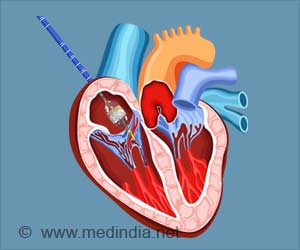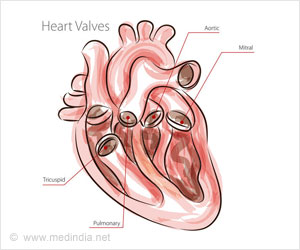- What is TAVR? (TAVI) - (https://www.heart.org/en/health-topics/heart-valve-problems-and-disease/understanding-your-heart-valve-treatment-options/what-is-tavr)
- Transcatheter Aortic Valve Replacement (TAVR) - (https://www.hopkinsmedicine.org/health/treatment-tests-and-therapies/transcatheter-aortic-valve-replacement-tavr)
- About Transcatheter Aortic Valve Replacement (TAVR) - (https://www.nhlbi.nih.gov/health/tavr)
About
Transcatheter aortic valve replacement (TAVR), or transcatheter aortic valve implantation (TAVI) is a minimally invasive interventional procedure used to replace a diseased aortic valve with a bioprosthetic valve made. This is done through a catheter, a thin, flexible tube, eliminating the need for open-heart surgery.
The aortic valve is one of four valves that control blood flow in the heart. Specifically, it controls the blood that runs from the heart through your aorta and to the rest of the body. With aging, over time due to wear and tear or because of a congenital heart defect, you can develop aortic stenosis, a type of heart valve disease(1✔ ✔Trusted Source
What is TAVR? (TAVI)
Go to source).
Did You Know?
Transcatheter Aortic Valve Replacement can be performed without open-heart surgery, offering quicker recovery and early discharge for patients with severe aortic stenosis. #hearthealth #valvereplacement #medindiaHow Does TAVR Work?
There are several ways your doctor can perform TAVR, depending on your health and the health of your blood vessels.
Here are the common access points:
- Femoral artery: This is the most common approach, where the doctor guides a tube with the replacement valve through the femoral artery in your groin or thigh to the heart.
- Chest vessels: If your femoral artery is too small, hardened due to calcium deposit or damaged, your doctor may use blood vessels in your chest to guide the tube to your heart.
- Stomach area blood vessels: This approach, called transcaval access, is less common and used for high-risk patients with unsuitable leg arteries.
- Other access points: In rare cases, doctors may access the heart from the vessel under the collarbone, the carotid artery in the neck, or through the septum (the wall separating the heart's chambers).
The procedure of TAVR is as follows(2✔ ✔Trusted Source
Transcatheter Aortic Valve Replacement (TAVR)
Go to source):
- Catheter Delivery: A thin, flexible catheter is inserted into the chosen access point and guided towards the heart using X-ray or other imaging techniques.
- Valve Placement: The collapsed replacement valve is delivered through the catheter and positioned within the old, narrowed valve.
- Valve Deployment: Depending on the valve type, a balloon at the catheter's tip inflates to expand and secure the new valve in place. Some newer valves expand on their own. A brief duration of pacing your heart may be required during valve deployment.
- Closure and Monitoring: Once the new valve is positioned correctly, the doctor removes the catheter. Throughout the procedure, your vital signs and heart rhythm are closely monitored.
Indications For TAVR
The indications for TAVR are:
- Severe Aortic Stenosis (AS)
- Symptomatic aortic stenosis (e.g., chest pain, shortness of breath, fainting)
- Aortic Stenosis with left ventricular dysfunction (e.g., ejection fraction <50%)
- Aortic Stenosis with pulmonary hypertension
- Failure of previous aortic valve repair or replacement
- High risk for surgical aortic valve replacement (SAVR)
- Inoperable or high-risk patients with Aortic Stenosis
- Patients with comorbidities (e.g., coronary artery disease, chronic kidney disease)
Contraindications for TAVR
TAVR may not be suitable for everyone. Here are some reasons why a doctor might advise against it:
- Severe bleeding disorders
- Active infection
- Anatomy not suitable for a catheter-based approach
- Very severe aortic valve regurgitation (leakage)
Benefits of TAVR
Compared to traditional open-heart surgery, TAVR offers several benefits:
- Minimally invasive
- Reduced recovery time
- Less pain
- Lower risk
- Improved quality of life
- Can be performed under conscious sedation
- Suitable for high-risk patients
- Improved valve function
What Are the Risks of TAVR?
As with any medical procedure, TAVR carries some risks. These include:
- Vascular complications
- Stroke
- Heart attack
- Kidney problems
- Valve leakage
- Pacemaker implantation
- Death
What to Expect Before, During, and After the Procedure
Before the Procedure:
- Medical Evaluation: Comprehensive assessments including imaging studies (e.g., echocardiogram, CT scans), blood tests, and cardiac catheterization may be performed.
- Medication Adjustments: Some medications may need to be adjusted or temporarily stopped before the procedure.
- Patient Education: Patients are informed about the procedure, risks, benefits, and post-operative care expectations.
During the Procedure:
- Anesthesia: Most TAVR procedures are performed under local anesthesia with sedation, although general anesthesia may be used in some cases.
- Catheter Insertion: A catheter is inserted through a blood vessel (typically the femoral artery) and guided to the heart under fluoroscopy imaging guidance.
- Valve Placement: The new valve is delivered to the site of the diseased valve and deployed using balloon inflation or self-expansion techniques.
- Monitoring: Vital signs and heart function are closely monitored throughout the procedure.
After the Procedure:
- Recovery: Patients may spend time in the intensive care unit (ICU) immediately post-procedure for monitoring.
- Hospital Stay: Length of hospital stay varies but is generally shorter than with open-heart surgery.
- Medications: Blood thinners (anticoagulants) and antibiotics may be prescribed to prevent infection and clotting.
- Follow-Up Care: Regular follow-up appointments and imaging tests are scheduled to monitor valve function and overall recovery.
In conclusion, Transcatheter aortic valve replacement (TAVR) is a significant advancement in treating aortic valve stenosis, offering a less invasive option for many patients who are at high risk for traditional surgery. While it involves risks, the procedure has been shown to improve symptoms and quality of life effectively.









